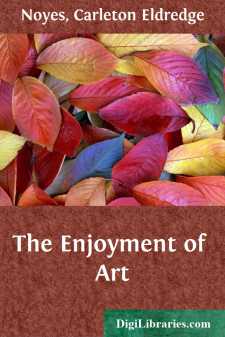Categories
- Antiques & Collectibles 13
- Architecture 36
- Art 48
- Bibles 22
- Biography & Autobiography 813
- Body, Mind & Spirit 142
- Business & Economics 28
- Children's Books 17
- Children's Fiction 14
- Computers 4
- Cooking 94
- Crafts & Hobbies 4
- Drama 346
- Education 46
- Family & Relationships 57
- Fiction 11829
- Games 19
- Gardening 17
- Health & Fitness 34
- History 1377
- House & Home 1
- Humor 147
- Juvenile Fiction 1873
- Juvenile Nonfiction 202
- Language Arts & Disciplines 88
- Law 16
- Literary Collections 686
- Literary Criticism 179
- Mathematics 13
- Medical 41
- Music 40
- Nature 179
- Non-Classifiable 1768
- Performing Arts 7
- Periodicals 1453
- Philosophy 64
- Photography 2
- Poetry 896
- Political Science 203
- Psychology 42
- Reference 154
- Religion 513
- Science 126
- Self-Help 84
- Social Science 81
- Sports & Recreation 34
- Study Aids 3
- Technology & Engineering 59
- Transportation 23
- Travel 463
- True Crime 29
Carleton Eldredge Noyes
Carleton Eldredge Noyes (1872–1950) was an American writer and educator known for his works on aesthetics and the philosophy of art. He wrote extensively about the role of art in personal development and the human experience. Among his notable works are "The Gate of Appreciation" (1907), which explores how individuals can deepen their appreciation for beauty, and "The Enjoyment of Art" (1917), where he discusses how art can enrich everyday life. Noyes was also a lecturer at Harvard University, where he emphasized the importance of aesthetic education.
Author's Books:
Sort by:
PREFACE IN the daily life of the ordinary man, a life crowded with diverse interests and increasingly complex demands, some few moments of a busy week or month or year are accorded to an interest in art. Whatever may be his vocation, the man feels instinctively that in his total scheme of life books, pictures, music have somewhere a place. In his own business or profession he is an expert, a man of...
more...
PREFACE The following pages are the answer to questions which a young man asked himself when, fresh from the university, he found himself adrift in the great galleries of Europe. As he stood helpless and confused in the presence of the visible expressions of the spirit of man in so many ages and so many lands, one question recurred insistently: Why are these pictures? What is the meaning of all this...
more...



